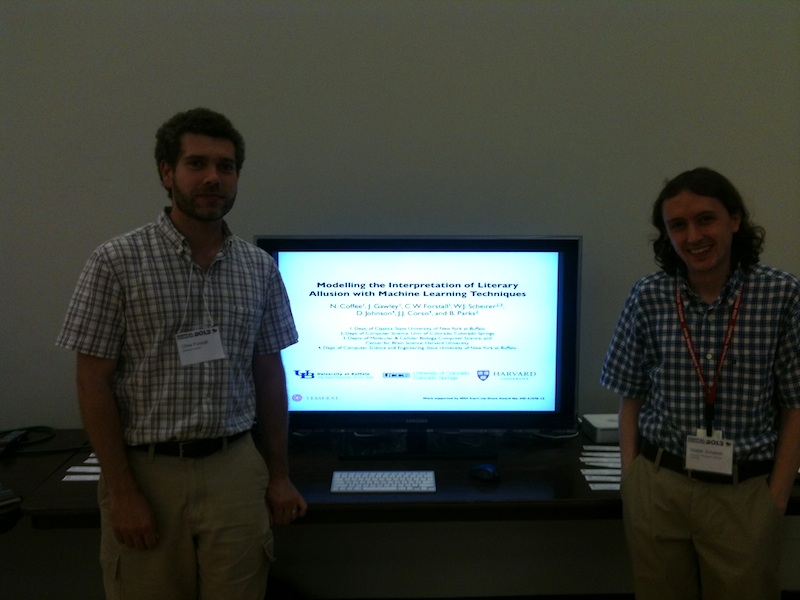Chris and Walter represented Tesserae at Digital Humanities 2013 in Lincoln, Nebraska. We presented our ongoing work on the Tesserae scoring system in the new electronic poster format, which was perfectly suited to the material. We got some positive feedback and suggestions for new directions both from the text re-use/stylometry side and from the machine learning/pattern recognition side.
We saw some excellent papers, although with such a diverse conference and up to six parallel sessions each day we had to make some difficult choices. David Hoover spoke about the use of various subsets vs. all of a feature set in authorship attribution, a subject which is interesting to us as we continue to work on methods for feature selection. Christof Schöch discussed working with a corpus unbalanced as to form (e.g. tragedy/comedy, poetry/prose) in stylometry, which caused us to rethink the usefulness of prose works as a comparandum for poetry. Jean-Gabriel Ganascia showed promising new techniques for the detection of text re-use in literature. We’re looking forward to the remainder of the conference, and will post a more detailed report on our return home. Maciej Eder addressed the problem of open-set attribution, an important reality all to often overlooked in authorship and style studies. David Bamman and Adam Anderson presented an analysis of social networks in Old Assyrian correspondence, which beautifully demonstrated how Digital Humanities projects can make rigorous scientific analysis both approachable and relevant for a Humanities audience. Graham Sack demonstrated results from an intriguing model for the structuring of narrative attention in novels.
As we head home from Nebraska we take with us new ideas and new perspectives, already planning our proposal(s) for DH 2014 in Lausanne.

